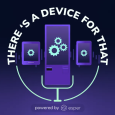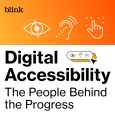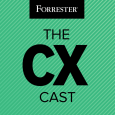Podcasts

Sep 24, 2024
25 min
Innovating UX Design for a Better Tomorrow
Ben Shown, Head of Design at Blink UX, joins the UX Banter podcast where they dive into his journey, his expertise in human-centered design, and how he approaches creating seamless digital experiences.

May 30, 2023
34 min
Enhancing UX with Evidence-Based, User-Centric Design
Blink's Head of Design, Byron Baker, joins "There's A Device For That" to share his experience leading a team of design experts as they create user experiences that truly enhance the value and impact of devices.

Aug 20, 2023
38 Episodes
The People Behind The Progress
Conversations with the people who are making digital products and services more accessible.

Apr 18, 2023
22 min
The CX Cast Part 2: Embedding CX Design at Avangrid
Blink and Avangrid continue their conversation about the role of design in creating quality experiences at Avangrid.

Apr 11, 2023
21 min
The CX Cast Part 1: Building The CX Function at Avangrid
Blink’s Chief Design Office and Avangrid’s Head of CX and Digital Transformation join The CX Cast to share their experience building a CX function at Avangrid.


